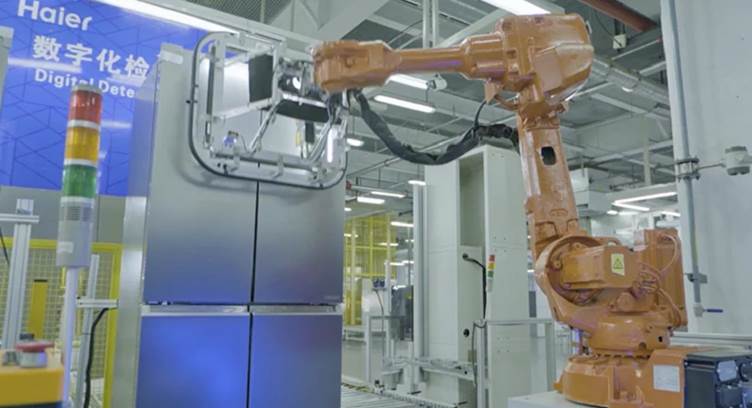With support from Huawei and China Mobile, Haier, China’s largest consumer electronics and home appliance producer, has successfully applied innovative manufacturing solutions combining 5G and mobile edge computing in its smart factories.
Developed at the joint-innovation base established in February, the solutions integrate 5G edge computing with artificial intelligence and particularly machine vision in manufacturing environments. They are applicable to various manufacturing scenarios where they can perform a variety of functions. Haier has launched the technologies at seven smart factories in China, and plans to expand the implementation at 20 factories by the end of 2022.
Huawei is expected to help Haier deploy the 5G solutions and transform about 100 of its manufacturing facilities globally within five years. The three also plan to offer the technologies to other leading manufacturers in China and abroad.
5G provides manufacturers with a lot of bandwidth —up to 20GBps— and latencies as low as 1 millisecond. Mobile edge computing, one of 5G’s main features, delivers extremely low-latency cloud computing. But it’s still early days for manufacturers aspiring to take advantage of 5G’s full capabilities.
The solutions enable the implementation of high-performance machine vision in a manufacturing environment through low-latency connections between high-definition cameras, the AI modules at the factory site, and the training servers located off-site.
Deployed on a 5G-enabled production line, machine vision saves manufacturers costs by rapidly performing QC checks with over 99% accuracy, at least 10% more accurate than without the function. Compared with visual inspection performed by humans, machine vision delivers much fewer false positive and false negative results.
The three partners also developed technologies to boost site and staff safety. Unlike traditional video surveillance systems that only have a recording function, AI-surveillance can automatically create alarms in real time when it detects anomalies on the factory floor. The technology can identify non-authorized individuals, process safety violations, and workers who aren’t where they should be.
In addition, the new solutions help to efficiently coordinate the large number of people, machines, and materials involved on a complex production line as a whole. The solutions achieve this through high-definition cameras, 5G gateways, and smart industrial terminals that work in unison with the help of artificial intelligence.




















